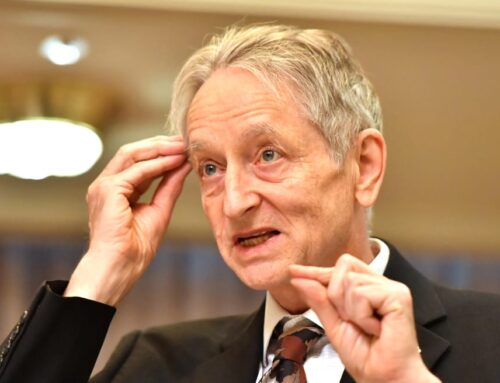Written by Kyler Ong
Image via HalGatewood.com on Unsplash
The multifaceted right-wing extremism that is today characterised by a confluence of radical ideologies bewilders many. Extreme right chatter online suggests we still have much to learn about the psychology of those who embrace such extreme and sometimes violent rhetoric. Quantum cognition, an emerging branch of science that has sought to apply the mathematical formalism of quantum theory to model human behaviour, offers an alternative framework for understanding the rationality of these extremists. This essay explores how prior information, in the form of the mental state of a right-wing terrorist, affects the decision-making of the extreme right community, and how quantum models of cognition can provide supplemental and even superior insights to classical models based on the maximisation of rewards and minimisation of punishments.
The Curious Case of Rathjen and Tarrant
Just over a year ago, on 19 February 2020, a white supremacist by the name of Tobias Rathjen opened fire in two shisha bars in Hanau, Germany, claiming nine lives. Chatter observed on anonymous extreme right-wing imageboards Neinchan and 8kun in the aftermath of the attack expressed negative sentiments—a marked difference from the hero worship of the 2019 Christchurch mosque shooter, Brenton Tarrant, who massacred almost six times the number of people.
While both attacks targeted the minority Muslim population and received acclaim and opprobrium from right-wing extremists online, Rathjen came under greater criticism seemingly due to his underlying mental health issues, including suspected schizophrenia. What manifested out of the online mockery of Rathjen did not seem to be a function of the much lower death toll he had inflicted, but rather his predisposition to seemingly more niche and outlandish conspiracy theories. His published materials, which included QAnon-esque conspiracy theories, were judged to be a manifestation of acute paranoia by members of the extreme right-wing community. These ideologies were unappealing to the Neinchan and 8kun community, where he was mocked for being a “schizo” and trademarked into a “walking meme”. Indeed, his conspiracy theories deviated from the normative and more widely accepted “Great Replacement” narrative, which warns of “white genocide”, heavily propagated by other notorious extreme right-wing terrorists and in the online extremist ecosystem. How can we understand this reaction?
Quantum Rationality
Research has empirically shown that human beings are rarely “classically rational”; in other words, their final decisions do not always need to be premised on trying to maximise rewards and minimise punishments. Other factors, such as prior information, can be at play when it comes to decision-making, and can hinder the ability to reach a perfectly rational decision.
One of the central discoveries of quantum physics, known as the wave-particle duality, is today applied to the field of cognitive and decision science as a possible theoretical alternative to explain human cognitive behaviour that is plagued by uncertainty, and therefore might differ from what is defined as “classically rational”. As Jerome Busemeyer and Peter Bruza succinctly captured, the uncertainty we experience represents a wave function in quantum terms, whereas the certainty resembles a particle. Once a decision is reached, the wave collapses into a particle, and uncertainty becomes certainty.
In physics, this wave-particle duality has been demonstrated by the famous double slit experiment and thought experiment of Schrodinger’s cat. Light and matter can act as either a particle or a wave, and the act of “measurement” can interfere with, or have an “observer effect” on, their behaviour. In other words, the final position of a photon of light in space, for instance, could be uncertain, acting like a wave instead of a particle, and be in what is known as a state of superposition. In the double slit experiment, emitting photons onto a plate with two slits will result in a wave-like pattern on the screen placed in front of it, implying that there’s no way to absolutely predict the final position of the photons. However, placing a photon detector next to one of the slits of the plate to “measure” where the photons are going will (and logically so) result in two bands of light on the screen, triggering, in quantum mechanical parlance, a “wave function collapse into a particle”.
Prior information, and the sequence in which the information is presented to the observer, can serve as a form of “measurement” in cognitive and decision science, and even produce an “order effect” on the final decision. Empirical results have shown also that the act of “measuring”, or “observing”, does produce a final decision that contradicts an outcome predicted by classical decision theory or rationality, warranting the need to examine if human beings are instead “quantum rational”.
Classical and Bounded Rationality
Back to the curious case of Rathjen and Tarrant. One could offer an explanation that prior information that centred on Rathjen’s obscure conspiracy theories had caused him to be marginalised by members of the extreme right-wing community, who viewed mental health issues as a stigma.
But traditional “classical rationality” that relies on the paradigm of expected utility theory cannot offer an explanation for this reaction by the online community. The expected utility principle theorises that a rational individual would always, based on their cost-and-benefit expectation of their choice, seek to maximise rewards and minimise punishments in order to get a net positive outcome (or “utility”). It may provide a solid underpinning that rationalises why there exists a dichotomy in the extreme right-wing’s online reactions to the occasional acts of terror, as some may feel that violence is the way forward, while others may be inclined to focus on shoring up support first and avoiding negative press as the optimal strategy. Yet, it does not explain how mental illness plays a role.
Here, the classical concept of “bounded rationality” may offer an explanation. Indeed, research has shown that human behavior is not “classically rational”, but is instead “boundedly rational”. Bounded rationality posits that rationalisation is imperfect due to our limited cognitive capacity, incomplete information, and time constraints, compelling individuals to “satisfice” (i.e., settle for a minimal acceptable outcome) rather than “maximise” an outcome. Bounded rationality has been shown to be a characterisation of stereotyping and prejudice, as the social experience of one inevitably attenuates one’s ability to rationalise sans heuristic and bias. Behavioural science, including in the study of violent extremism, posits that since rationalisation is based on emotion-driven decision, human judgments or choices cannot discount the role of heuristic and bias.
Filling the Classical Gap with Quantum
Bounded rationality, however, is composed of multiple alternative theoretic approaches that are fitted to solve particular puzzles, making it a rather eclectic methodology. Lacking a universal theory, this “toolbox of different theories” makes quantum theory particularly more attractive for the study of human cognition, as it provides a more systematic solution to various human behavioural puzzles.
In addition, the mathematical formalism of quantum theory is also able to encompass classically rational decisions. The quantum-classical correspondence principle codifies that quantum theory must reproduce the results of classical theory when the smaller microscopic effects (of particles) become negligible and the larger macroscopic effects (of material objects) come into being. In light of this, quantum probability must be reduced to include classical probability. This “general theory” of quantum probability can hence be formulated to include “classically rational” decisions to become a more universal toolbox for explicating human cognition.
Furthermore, quantum theory posits that the act of “measuring” – or in this case, “observing” that the attacker is mentally unsound – can generate a wave function collapse to create a negative interference whereby the observer of the attack becomes certain that it does not support the act of terror.
In other words, by “observing” that Rathjen was mentally ill, the “overall support” for him on Neinchan and 8kun was reduced as compared to Tarrant’s case, where he was not judged to be mentally ill. The provision of a “context” of mental illness solidified an observer’s certainty that he did not support the act nor the shooter. In the cognitive realm, a state of ambiguity is replaced by an affirmed conviction, just like how a wave function collapses into a particle in the material realm.
Going Forward
Granted, the application of quantum physics to human cognition, at this stage, is speculative and cannot offer a more in-depth cognitive explanation for why human beings act a certain way. Just think about it as knowing that the apple will probably fall from the tree when the latter is shaken (instead of float upwards), but not understanding that gravity is behind it – that’s loosely the status quo of quantum cognition.
Yet, quantum theory has the potential to add new perspective to human cognitive science and decision making. As Richard Feynman once said: “Physicists of any good should know six or seven different methods to solve the same problem”. Could human cognition span both classical and quantum systems? There are no reasons to suggest not!
Kyler Ong is an Associate Research Fellow at the International Centre for Political Violence and Terrorism Research (ICPVTR) in Singapore. Her research focuses on Chemical, Biological, Radiological and Nuclear (CBRN) terrorism, right-wing extremism, and the application of quantum theory to the field of terrorism/extremism studies.







Leave a Reply